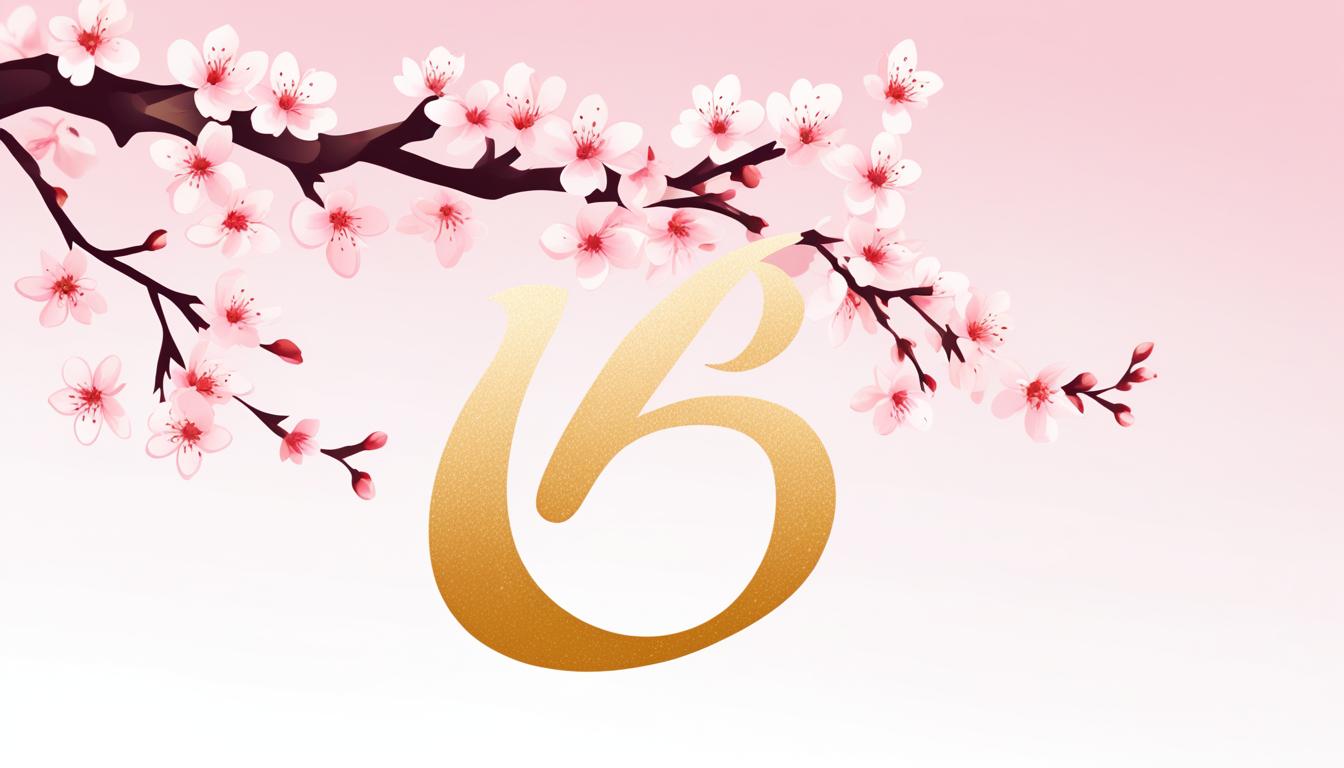In this article, you’ll discover how to say “6 in Japanese” and get familiar with the rules and cultural aspects of counting in the Japanese language. Whether you’re planning a trip to Japan, studying the language, or simply have an interest in Japanese culture, mastering numbers in Japanese is an essential skill to have.
Understanding how to count and pronounce numbers in Japanese opens doors to various opportunities, such as navigating public transportation, shopping, understanding prices, and interacting with locals. It also allows for a deeper appreciation of Japanese culture and language.
Let’s dive in and uncover the meaning, grammar, pronunciation, and kanji representation of the number 6 in Japanese!
Before we begin, let’s take a closer look at the importance of learning Japanese numbers and the benefits it brings.
Why Learning Japanese Numbers is Important
Understanding numbers in everyday life is crucial, regardless of the language. Learning Japanese numbers not only helps you with counting, but it also offers a range of benefits that enhance your overall language skills and cultural understanding.
One of the main advantages of learning Japanese numbers is the ability to read and remember proper nouns in Japanese. Many names of people, places, and objects in Japan are expressed using numbers. Being familiar with Japanese numbers allows you to recognize and remember these names with ease, expanding your vocabulary and comprehension.
Additionally, learning Japanese numbers allows you to explore the cultural meanings associated with each number. In Japanese culture, certain numbers hold symbolic significance. For example, the number “4” (“shi”) is associated with death, while “9” (“ku”) can be associated with suffering. Understanding these cultural associations deepens your understanding of Japanese society and enhances your ability to communicate effectively with native speakers.
Furthermore, learning Japanese numbers gives you the opportunity to appreciate the humor and wordplay of number puns used in Japan. Japanese language and culture embrace puns and wordplay, and numbers are often creatively used for humorous effect. By grasping the nuances and wordplay involving Japanese numbers, you can engage in playful conversations and fully appreciate the wit and humor embedded within the language.
Benefits of Learning Japanese Numbers:
| Benefits | Description |
|---|---|
| Expanded Vocabulary | Ability to recognize and remember proper nouns in Japanese |
| Cultural Understanding | Explore the cultural meanings associated with Japanese numbers |
| Humor and Wordplay | Appreciate the humor and wordplay of number puns used in Japan |
| Enhanced Communication | Communicate effectively and engage in playful conversations with native speakers |
How to Pronounce and Write Japanese Numerals
Pronouncing and writing Japanese numerals is relatively simple. In Japan, Arabic numerals are widely used, so you’ll only need to remember how to pronounce the numbers in Japanese. Let’s take a look at the pronunciation rules for Japanese numbers:
| Number | Pronunciation |
|---|---|
| 0 | zero (ゼロ) |
| 1 | ichi (いち) |
| 2 | ni (に) |
| 3 | san (さん) |
| 4 | shi (し) or yon (よん) |
| 5 | go (ご) |
| 6 | roku (ろく) |
| 7 | shichi (しち) or nana (なな) |
| 8 | hachi (はち) |
| 9 | kyuu (きゅう) or ku (く) |
| 10 | juu (じゅう) |
Writing Japanese numerals involves a combination of hiragana, katakana, and kanji characters. However, you’ll only need to learn how to write zero to ten and some units of bigger numbers. Here’s a table showcasing the hiragana and kanji characters for the numbers zero to ten:
Understanding the pronunciation and writing of Japanese numerals will enable you to count easily and communicate numbers accurately in Japanese.
Counting in Japanese from 0-10
The basics of counting in Japanese from 0 to 10 are fairly simple. Each number has its own hiragana, katakana, and kanji characters, along with romaji representation. Understanding the pronunciation and writing of numbers 0-10 will serve as the foundation for counting in Japanese.
Here are the numbers from 0 to 10 in Japanese:
| Number | Hiragana | Katakana | Kanji | Romaji |
|---|---|---|---|---|
| 0 | れい | ゼロ | 零 | rei |
| 1 | いち | イチ | 一 | ichi |
| 2 | に | ニ | 二 | ni |
| 3 | さん | サン | 三 | san |
| 4 | よん | ヨン | 四 | yon |
| 5 | ご | ゴ | 五 | go |
| 6 | ろく | ロク | 六 | roku |
| 7 | なな | ナナ | 七 | nana |
| 8 | はち | ハチ | 八 | hachi |
| 9 | きゅう | キュウ | 九 | kyuu |
| 10 | じゅう | ジュウ | 十 | juu |
Now that you know the numbers from 0 to 10 in Japanese, you can start practicing counting and building your knowledge of the Japanese numeral system.
Counting in Japanese from 11-90
Counting in Japanese beyond 10 follows a logical pattern using a combination of words to represent numbers. Let’s explore how to count from 11 to 90 in Japanese:
Counting from 11 to 19
When counting from 11 to 19, you combine the word for 10, which is represented as “juu,” with the individual numbers. Take a look at the table below:
| Japanese | Reading | English |
|---|---|---|
| 11 | juu ichi | ten one |
| 12 | juu ni | ten two |
| 13 | juu san | ten three |
| 14 | juu yon | ten four |
| 15 | juu go | ten five |
| 16 | juu roku | ten six |
| 17 | juu nana | ten seven |
| 18 | juu hachi | ten eight |
| 19 | juu kyuu | ten nine |
Counting from 20 to 90
From 20 to 90, you combine the first number with the word for 10, “juu.” Let’s take a look at the table below:
| Japanese | Reading | English |
|---|---|---|
| 20 | ni juu | two ten |
| 30 | san juu | three ten |
| 40 | yon juu | four ten |
| 50 | go juu | five ten |
| 60 | roku juu | six ten |
| 70 | nana juu | seven ten |
| 80 | hachi juu | eight ten |
| 90 | kyuu juu | nine ten |
By understanding this pattern, you can count in Japanese all the way up to 99!
Now that you have a grasp of counting in Japanese from 11 to 90, let’s move on to the next section and explore counting from 100 to 900!
Counting in Japanese (100-900)
Counting in Japanese from 100 to 900 is an essential skill for expressing larger quantities in the Japanese language. This section will guide you through the counting system for these numbers, including pronunciation, variations, and written forms.
The word for hundred in Japanese is “hyaku.” To count from 100 to 900, you combine “hyaku” with the corresponding individual numbers. Here are the numbers from 100 to 900:
| Japanese Numbers | Pronunciation | Written Form |
|---|---|---|
| 100 | hyaku | 百 |
| 200 | nihyaku | 二百 |
| 300 | sanbyaku | 三百 |
| 400 | yohyaku | 四百 |
| 500 | gohyaku | 五百 |
| 600 | roppyaku | 六百 |
| 700 | nanahyaku | 七百 |
| 800 | happyaku | 八百 |
| 900 | kyuuhyaku | 九百 |
Some numbers, such as 300 (sanbyaku), 600 (roppyaku), and 800 (happyaku), have variations in pronunciation. Learning these variations will help you accurately count from 100 to 900 in Japanese and effectively communicate larger quantities.
When it comes to expressing even larger numbers, Japanese uses kanji characters and combinations of kanji or Arabic numbers. The counting system becomes more complex, but mastering the numbers from 100 to 900 is a crucial step in understanding and using large numbers in Japanese.
In the next section, we’ll explore counters in Japanese, which are essential for counting objects accurately in the language.
Counters in Japanese

Counters, or counter words, are essential when counting objects in Japanese. These unique words are used to specify the type or category of objects being counted. By incorporating counters into your counting system, you can accurately express quantities and navigate the intricacies of the Japanese language.
There are various categories of counters based on the shape, texture, or nature of the object being counted. Here are some commonly used counters in Japanese:
| Counter | Pronunciation | Usage |
|---|---|---|
| “tsu” | [tsu] | General counting for items or objects with no specific shape or category. |
| “hon” | [hon] | Counting long, slender objects like pencils, bottles, or tree trunks. |
| “ko” | [ko] | Counting small, round objects such as fruits or coins. |
| “nin” | [nin] | Counting people or living beings. |
Understanding the appropriate counter to use in different situations is crucial for accurate counting in Japanese. It demonstrates your proficiency in the language and adds depth to your conversations.
Tips for Mastering Japanese Numbers
To effectively master Japanese numbers, it’s important to practice regularly and reinforce your learning through repetition. By incorporating the following strategies, you can enhance your understanding and fluency in Japanese numbers.
1. Utilize Language Learning Resources
Make use of language learning apps, online courses, and language exchange programs to practice counting and engage in conversations involving numbers. These resources offer interactive exercises, audio materials, and cultural insights that can greatly contribute to your learning experience.
2. Immersion and Daily Practice
Incorporate Japanese numbers into your daily life. Read signs, labels, and other numerical information in Japanese whenever possible. Practice counting while shopping, cooking, or simply going about your daily routine. Immersing yourself in the language will help you become more comfortable with Japanese numbers and reinforce your learning.
3. Focus on Pronunciation
Pay attention to the correct pronunciation of Japanese numbers. Practice saying them aloud, and listen to native speakers to improve your pronunciation and intonation. This will not only help you communicate effectively but also enhance your comprehension when hearing or listening to Japanese numbers.
4. Create Associations and Mnemonics
Try creating associations or mnemonics to remember Japanese numbers. Associate each number with a visual representation or a memorable phrase. For example, you could associate the number four (“shi”) with the sound of “sheep,” or the number nine (“ku”) with the image of a “kite.” These mental associations can make the learning process more engaging and enjoyable.
By following these tips and strategies, you can develop a strong foundation in Japanese numbers. Remember, consistency is key – devote regular practice and immerse yourself in the language to become proficient in counting and using Japanese numbers with ease.

